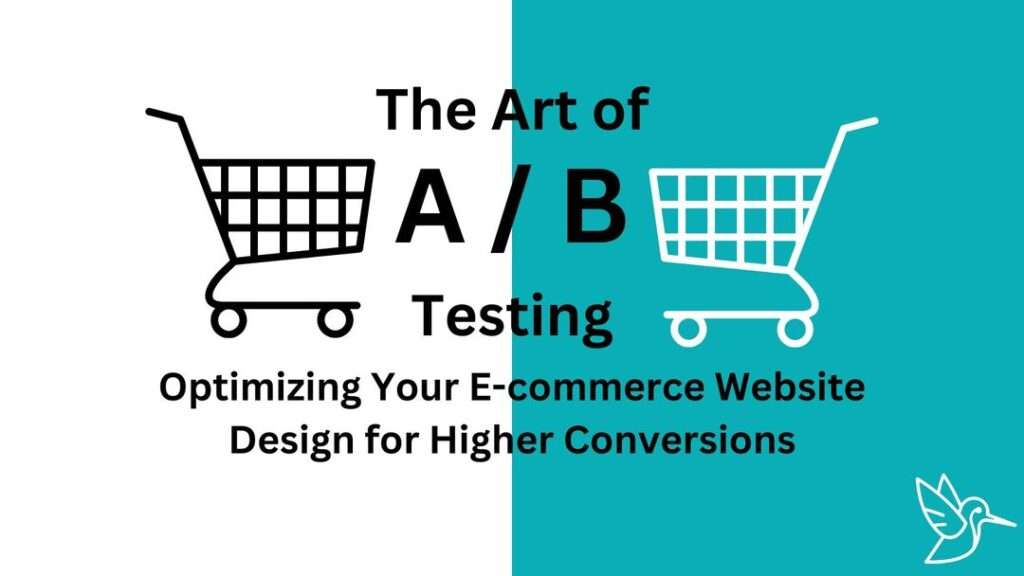You’ve got your e-commerce website set up using Shopify or Magento. Or perhaps you have listings and a brand store on Amazon. It’s sleek, intuitive, and your products are flying off the virtual shelves. That’s a great start, but could it be better? The answer lies in the world of A/B testing.
Why A/B Testing Matters
A/B testing, in essence, is a simple concept. It’s the method of comparing two versions of a web page or other user experience to determine which one performs better. If you’ve ever found yourself wondering whether your customers would respond better to a red ‘Buy Now’ button or a green one, then you’re already thinking along the lines of an A/B test.
A/B testing isn’t just about colors, though. You can test elements such as headlines, product descriptions, images, layout changes, and much more. The goal is to identify changes that increase or maximize an outcome of interest, which for e-commerce sites is often conversions, the rate at which visitors turn into buyers.
Navigating A/B Testing Effectively
To get the most out of A/B testing, start with these steps:
- Identify a goal: Whether it’s increasing sign-ups, improving conversion rates, or reducing cart abandonment, having a clear goal will guide your A/B testing strategy.
- Generate hypothesis: Based on data, industry best practices, or even hunches, come up with a theory. For example, ‘changing the CTA button from green to red will increase conversions’.
- Create Variations: Using your A/B testing software (like Google Optimize), make the desired changes to an element of your website.
- Run the experiment: Simultaneously direct visitors to both versions of your site and track their interaction. The software will collect the data for you to analyze later.
- Analyze the results: Once you have sufficient data, you can analyze the results. The version of your website that gives the best conversion rate is the winner.
When to A/B Test
A/B testing is not just a tool; it’s a culture of continuous improvement that should permeate your ecommerce strategy. But when is the right time to conduct an A/B test? Here are some scenarios when A/B testing can be particularly valuable:
- Website Redesign or Feature Launch: When you’re launching a new website design, introducing a new feature, or revamping an existing one, it’s essential to conduct A/B testing. This allows you to measure how these changes impact user behavior and conversion rates before fully implementing them.
- Performance Drop: If you see a decline in key performance indicators (KPIs) like bounce rates, conversion rates, or average session duration on your website, it’s time to use A/B testing. By testing different elements, you can identify what’s causing the decrease and how to address it.
- Campaign Optimization: In digital advertising and email marketing, A/B testing should be conducted regularly. This can involve testing different ad copies, email subject lines, CTAs, or landing pages. These tests can significantly improve your click-through rates and conversions.
- Improving User Experience (UX): If you wish to enhance your site’s user experience, A/B testing various design elements, page layouts, navigation options, and more can provide you with actionable insights. Better UX often leads to increased customer engagement and higher conversions.
- Pricing Strategies: A/B testing is an effective way to experiment with different pricing structures and strategies. By presenting different price points or packaging options to segmented groups, you can determine which is more appealing to customers and leads to higher sales.
Remember, A/B testing is most effective when it’s an ongoing process. Regular testing, combined with careful analysis of the results, will provide you with the insights needed to continually refine and optimize your ecommerce strategies.
Fine-Tuning Your A/B Testing Approach
A/B testing requires strategic thinking, patience, and attention to detail. It’s important to only test one change at a time. You may be tempted to change multiple aspects of your webpage at once, but doing so can skew results and make it difficult to discern which change led to the observed results. For instance, if you decide to change both the color and text of your CTA button in the same test, and see an increase in conversions, you won’t know whether it was the color, the text, or both that made the difference.
Many people take for granted other variables too. When and where are the different versions of your A/B test being ran? Are they being shown equally under the same circumstances? These are all considerations when trying to analyze the results.
Methodologically, keeping your variables limited will allow you to accurately measure the impact of each change. Start with the one element you suspect could have the biggest impact on your goal. If your hypothesis was correct, great! If not, you can proceed with the next test. It’s a process of continuous refinement and learning.
Remember, the goal of A/B testing isn’t just about finding what works, but learning about your customers’ behavior, preferences, and needs. So take the time to analyze not just the what, but the why, behind your results. Over time, you’ll accumulate knowledge that can significantly enhance your website’s performance and give your e-commerce business a strong competitive edge.
A/B testing is a normal part of Nectar’s optimization process. For information on whether or not you should be testing, or for help increasing your conversion rates and sales, don’t hesitate to reach out to Nectar.





